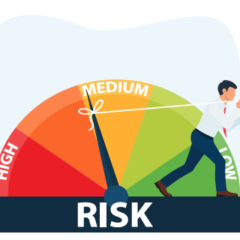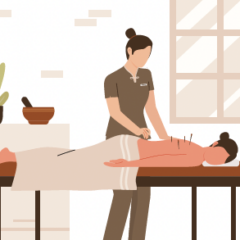Last updated on
Blood Clots, Travel, and Athletes: What’s the Connection?
Over the last few years, the popularity of endurance athletic events such as marathons, triathlons, and Ironman competitions has grown rapidly, with many athletes traveling long distances to compete. We spoke with Dr. Amanda Zaleski, Exercise Physiologist in the Department of Preventive Cardiology at Hartford Hospital, about potential risk factors for blood clots and preventive measures that people can take to help protect themselves.
Q. Tell us about your work related to exercise physiology. What got you interested in this topic?
A: My interest is on how exercise can prevent or control risk factors related to heart disease, and I specialize in high blood pressure (otherwise known as hypertension). Our work largely focuses on adults with varying levels of risk across the lifespan, including elite runners and endurance runners all the way to people with established heart disease.
Almost 10 years ago, my colleague, Dr. Beth Taylor, and I became highly interested in the risk of blood clots in endurance athletes. At the time, Dr. Taylor’s sister experienced a blood clot when she returned to her home in Seattle after running a half-marathon in Connecticut. Her sister was in her late twenties and otherwise healthy at the time. Both Dr. Taylor and I are marathon runners and her sister’s event got us interested in this idea of whether there was any link between exercise and travel that may have played a role in her blood clot. At the time, there weren’t a lot of studies about endurance athletes, blood clots, and the impact of travel; however, we did know [through other research] that any travel over four hours can increase the potential risk of a blood clot due to not moving around, being in one position for a long time, etc.
Q. How did you begin to assess the impact of travel on endurance athletes?
A: We recruited 20 individuals running in the Boston Marathon who were flying more than four hours to attend the event. The participants came from Texas, California, and Colorado and then we had a control group of 20 individuals from New England. For those traveling to the marathon, we partnered with Quest Diagnostics to collect traveling marathoners’ blood in their home state, and then collected additional blood samples before and immediately following the marathon.
We also measured markers of blood clots (such as D-dimer levels) and blood breakdown (such as coagulatory and fibrinolytic factors) before they traveled, when they landed, and after their race. While none of the athletes in our study had a blood clot, athletes that flew in for the race did have elevated biomarkers for blood clots.
Q. Can you explain what elevated biomarkers means?
A: When you participate in a long-haul running event like a marathon, something called hemostatic system activation occurs. Hemostatic system activation is a normal process where the body responds to injury or inflammation by trying to essentially stop the body from bleeding too quickly. It typically causes an increase in coagulation factors (which help blood clot) and fibrinolytic factors (which help to break down blood clots). These factors typically increase at the same rate but the athletes that flew to the Boston Marathon had higher coagulatory factors than fibrinolytic factors – meaning they were potentially at higher risk for a blood clot.

Q. What should athletes keep in mind as they consider different athletic events?
A: In otherwise healthy athletes, it’s important to note that these reports of blood clots are rare. Millions of people run marathons each year and the risk for blood clots is relatively low. But there are some risk factors that all people should keep in mind, especially athletes. We talked about travel as a potential risk factor, but what do you do after you run a marathon? You want to relax, right? Athletes are likely to be more sedentary the next day or two after a major athletic event, and like we discussed, they may be traveling back home. That drop in movement (or what we call “stasis”) is a risk factor. Other factors include microtrauma (an injury resulting from repetitive stress to tissues) that comes from exercising or other larger injuries. All of these things (decrease in movement, injury, etc.) are risk factors for non-athletes, as well, so in combination, they can potentially create a “perfect storm” and tip the balance in favor of a blood clot.
Interestingly, in a published review of athletes who had blood clots, almost all of them were misdiagnosed initially. In some cases, the athletes misjudged their symptoms, thinking that pain in the leg might be a pull or tear, or that chest discomfort was due to an upper respiratory infection when they actually had a blood clot.
In other cases, a blood clot may not have been the first diagnosis on the radar for the clinician, causing a 20-day delay in diagnosis on average. A lot of athletes will also go to a physical therapist with what they think is a muscle tear or trauma and it’s really a blood clot. It’s something athletes should be aware of and talk about with their provider.
Q. What are some tips for preventing blood clots in athletes (or in all individuals)?
A: Some recommendations we have for all individuals, including athletes, who are traveling include the following:
- Wear loose fitting clothing and adjustable shoes.
- Make use of cabin overheads to leave yourself plenty of legroom.
- Pass on the salty food, which can contribute to water retention.
- Take a short walk every hour or so. Rotate ankles, point toes, and flex calves while seated. Elevate feet whenever possible.
- Drink plenty of water to prevent dehydration. Drinking lots of fluids can serve as a natural “alarm clock” to ensure you get up and “go” every so often!
- Avoid excessive alcohol consumption, which can contribute to dehydration and/or result in sitting in one position for too long.
- Be cautious of sleep sedatives, which can result in sitting in one position for too long.
- If you’ve had a blood clot in the past—or have a history of injury—talk to your doctor about medications that might help you manage your blood clot risk.
Another recommendation is to consider wearing compression socks while traveling, which is a relatively easy and inexpensive intervention that all people, including athletes, may derive benefit from. When wearing compression socks, individuals should measure the widest part of their calf and select the socks based on that size (and not necessarily their shoe size) to get the right fit. We also tell individuals to avoid compression sleeves (stockings that don’t cover the entire foot), since sleeves can form a band around the ankle and cut off microcirculation.
Knowing the signs and symptoms of a blood clot—such as redness, pain, or swelling in the leg, and shortness of breath or trouble breathing—are important for athletes to help avoid a delay in diagnosis. In addition, athletes should know about the potential risk factors for blood clots and preventive measures that they can take to help protect themselves.



